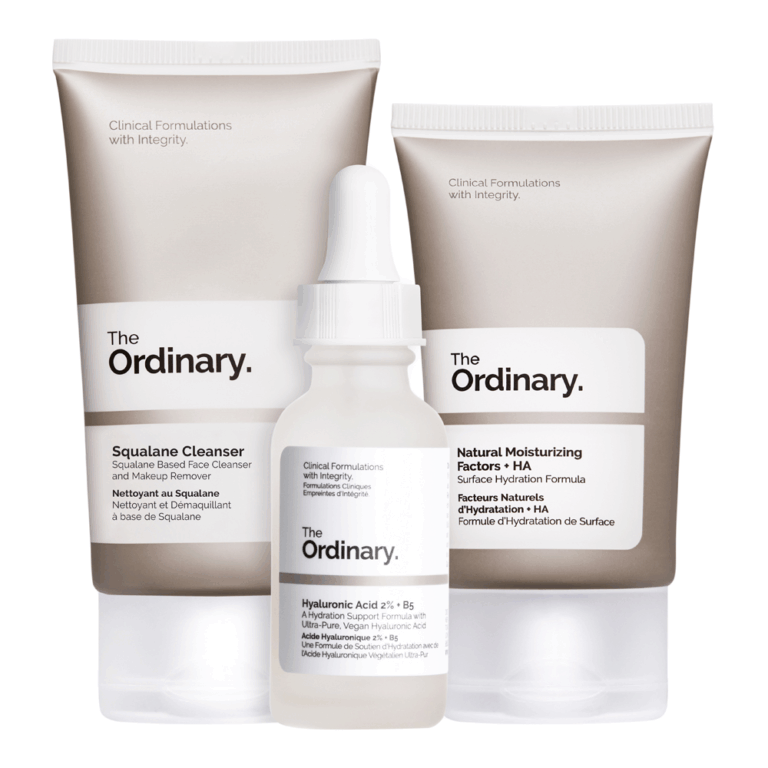Whats The Best Car Seat Brand? Navigating the Essential Choice for Your Child’s Safety
Whats The Best Car Seat Brand? Navigating the Essential Choice for Your Child’s Safety cars.truckstrend.com
Bringing a new child into your life is an unparalleled joy, accompanied by a myriad of decisions that prioritize their well-being. Among the most critical of these is selecting the right car seat. It’s not just a convenience; it’s a non-negotiable safety device, mandated by law, designed to protect your most precious cargo in the event of a collision. As you embark on this crucial quest, one question invariably rises to the forefront: "Whats The Best Car Seat Brand?"
The truth is, there isn’t a single, universally "best" car seat brand. What’s best for one family might not be ideal for another. The "best" choice is highly subjective, influenced by a complex interplay of factors including your child’s age, weight, and height, your vehicle’s make and model, your budget, lifestyle, and specific safety feature preferences. This comprehensive guide aims to demystify the process, helping you understand what makes a car seat brand stand out, and how to identify the perfect fit for your family’s unique needs.
Whats The Best Car Seat Brand? Navigating the Essential Choice for Your Child’s Safety
Understanding "Best": It’s Not One-Size-Fits-All
The concept of "best" in the realm of car seats isn’t about luxury or popularity; it’s fundamentally about safety, proper fit, and ease of use. Every car seat sold in the United States must meet rigorous federal safety standards set by the National Highway Traffic Safety Administration (NHTSA). This means that, at a baseline, any new car seat you purchase is considered safe if used correctly.
However, brands differentiate themselves through innovative safety features, ease of installation, comfort for the child, quality of materials, durability, and customer support. The "best" brand for you will excel in the areas that matter most to your family. For some, it might be the brand renowned for its intuitive installation. For others, it could be a brand offering superior side-impact protection or one that caters to multiple children in a row. Let’s delve into the key factors that help define "best" for your situation.
Key Factors to Consider When Choosing a Car Seat Brand
Before you even look at specific brands, understanding these critical considerations will narrow down your options significantly.
-
Safety Standards & Testing:

- NHTSA Ratings: While all seats meet minimum federal standards, NHTSA provides ease-of-use ratings for installation, which can be a significant indicator of user-friendliness.
- Beyond Federal Minimums: Some brands invest in additional, voluntary crash testing or incorporate advanced safety features like anti-rebound bars, load legs, crumple zones, or enhanced side-impact protection. Researching these can provide an extra layer of reassurance.
- LATCH System: Ensure the seat is compatible with your car’s Lower Anchors and Tethers for Children (LATCH) system, or that it offers a secure seat belt installation path.

-
Ease of Installation: This is arguably the most crucial factor after safety. A car seat is only safe if it’s installed correctly.
- Clear Instructions: Look for brands known for user-friendly manuals and clear labels on the seat itself.
- Installation Indicators: Many brands offer level indicators or tension indicators that turn green when the seat is installed correctly.
- Snug Fit: Can you install it tightly enough (less than one inch of movement at the belt path)? Some brands feature unique tightening mechanisms.

-
Comfort & Fit for Child: A comfortable child is a safer child, as they are less likely to try and wiggle out of restraints.
- Padding and Fabrics: Look for soft, breathable, and durable materials.
- Adjustability: Easy-to-adjust harness systems (no rethreading!), multiple recline positions, and adjustable headrests are essential as your child grows.
- Size and Weight Limits: Ensure the seat accommodates your child’s current size and has sufficient room for growth within the seat’s limits.
-
Ease of Cleaning & Maintenance: Kids are messy. Removable, machine-washable covers are a huge plus. Check if the fabric is spill-resistant or easy to wipe down.
-
Durability & Longevity:
- Materials: High-quality plastics, metal components, and robust fabrics contribute to a longer lifespan.
- Expiration Dates: All car seats have expiration dates (typically 6-10 years from the manufacture date). A brand with a longer expiration date might offer better value if you plan to use it for multiple children.
-
Budget: Car seats range from under $100 to over $500. More expensive doesn’t always mean safer, but it often means more features, premium materials, or enhanced ease of use. Determine your budget, but prioritize safety and proper fit above all else.
-
Brand Reputation & Customer Support: Research a brand’s history of recalls, read customer reviews, and check their warranty and customer service policies. A brand with a solid reputation for safety and responsive support can provide peace of mind.
-
Vehicle Compatibility: Not all car seats fit well in all vehicles. Some larger seats might not fit in smaller cars, or they might make it difficult for front-seat passengers to have enough legroom. If you have multiple children, consider how many seats can fit across your back seat.
Types of Car Seats and Respected Brands in Each Category
Car seats are generally categorized by the child’s age, weight, and height. Understanding these types will help you narrow down the brands that specialize in what you need.
-
Infant Car Seats (Rear-Facing Only):
- Purpose: Designed exclusively for newborns and infants, typically from 4-5 lbs up to 22-35 lbs. They are rear-facing only and often click into a base that stays in the car, making them highly portable. Many are compatible with strollers to form a "travel system."
- Top Brands:
- Chicco: Renowned for the KeyFit 30, known for its exceptional ease of installation.
- Graco: Popular for the SnugRide series, offering a wide range of affordable and reliable options.
- Nuna: A premium brand known for sleek design, high-quality materials, and flame-retardant-free fabrics (e.g., PIPA series).
- Cybex: Offers advanced safety features and stylish designs (e.g., Cloud Q, Aton 2).
-
Convertible Car Seats (Rear-Facing & Forward-Facing):
- Purpose: These seats "convert" from rear-facing to forward-facing as your child grows. They can often be used from birth (or 5 lbs) up to 40-65 lbs in rear-facing mode, and then up to 40-80 lbs (or more) in forward-facing mode. They are a long-term investment.
- Top Brands:
- Britax: Known for robust safety features like SafeCell Impact Protection and anti-rebound bars (e.g., Boulevard, Marathon).
- Graco: Offers popular models like the Graco Extend2Fit, which allows for extended rear-facing, a key safety benefit.
- Chicco: The NextFit Zip is a favorite for its easy installation and zippered cover for cleaning.
- Diono: Famous for their narrow design, allowing three-across installation in many vehicles, and a long lifespan (e.g., Radian 3RXT).
- Maxi-Cosi: European-inspired design, comfortable padding, and often lighter weight (e.g., Pria).
-
All-in-One Car Seats (Rear-Facing, Forward-Facing, & Booster):
- Purpose: The ultimate long-term solution, designed to take your child from birth through their booster seat years (up to 100-120 lbs). While convenient, they can be bulky and may not offer the perfect fit for newborns that a dedicated infant seat does.
- Top Brands:
- Graco: The Graco 4Ever DLX is a perennial bestseller, highly praised for its versatility and user-friendliness.
- Evenflo: Offers strong all-in-one contenders known for value and solid safety (e.g., EveryStage).
- Safety 1st: Provides accessible and feature-rich all-in-one options.
-
Booster Seats (High-Back & Backless):
- Purpose: For older children (typically 40 lbs and up, usually around age 4-5) who have outgrown their harnessed car seats but are not yet tall enough to fit an adult seat belt properly (typically when they reach 4’9"). Booster seats elevate the child to ensure the vehicle’s seat belt fits correctly across their shoulder and hips.
- Top Brands:
- Graco: Wide variety of affordable and reliable booster options (e.g., TurboBooster).
- Britax: Offers premium boosters with advanced safety features (e.g., Grow With You, Highpoint).
- Chicco: The KidFit Zip Air is a popular choice for comfort and ease of cleaning.
- Evenflo: Provides good value booster seats.
Top Contending Car Seat Brands: A Closer Look
While "best" is subjective, certain brands consistently earn high marks for their quality, innovation, and commitment to safety.
- Chicco: Often lauded for its unparalleled ease of installation, particularly with its infant car seats (KeyFit 30). Their convertible seats also follow suit with intuitive features.
- Graco: A household name, Graco offers an extensive range of car seats at various price points. They are celebrated for their innovation (e.g., extended rear-facing, all-in-one solutions) and accessibility.
- Britax: Known for its robust engineering and dedication to advanced safety features, Britax car seats often feature steel frames, crumple zones, and superior side-impact protection. They are a go-to for parents prioritizing maximum safety.
- Nuna: Positioned at the premium end, Nuna combines sleek aesthetics with thoughtful design, often using flame-retardant-free fabrics and offering features that enhance convenience for parents.
- Clek: A Canadian brand gaining traction for its narrow, robust, and environmentally conscious designs. Clek seats are built to last, often featuring steel and magnesium frames and free of brominated flame retardants.
- Diono: A unique brand specializing in narrow convertible and booster seats, perfect for families needing to fit three car seats across the back row. Their seats also boast long lifespans.
Practical Advice and Actionable Insights
- Read Your Vehicle Manual: Your car’s manual will have specific instructions and restrictions regarding car seat installation, including where LATCH anchors are located and weight limits for those anchors.
- Get It Professionally Checked: Once you’ve installed your car seat, visit a certified Child Passenger Safety Technician (CPST). They can verify correct installation, teach you how to do it yourself, and ensure a proper fit for your child and vehicle. Many fire departments, police stations, or hospitals offer this service for free.
- Register Your Car Seat: This ensures you receive important safety notices and recall information from the manufacturer.
- Understand Expiration Dates: Plastics and other materials degrade over time, and safety standards evolve. Never use an expired car seat. The date is typically molded into the plastic or on a sticker.
- Never Buy a Used Car Seat Unless You Know Its History: A car seat that has been in a moderate to severe crash should be replaced. You can’t be sure of a used seat’s history, and it might also be expired or missing parts.
- Practice Installation: Before your baby arrives or before a big trip, practice installing and uninstalling the seat. The more familiar you are, the easier and safer it will be.
- Consider Your Lifestyle: Do you frequently switch the seat between cars? Do you travel often? Do you need a lightweight option for taxis or ride-shares? These factors will influence your choice.
Representative Price Range Table for Popular Car Seat Brands
As "complete information" for all models is impossible due to constant market changes, this table provides typical price ranges and key strengths for popular brands across different car seat types. Prices are estimates and can vary significantly based on model, retailer, and sales.
| Brand | Typical Car Seat Type(s) | Key Features/Strengths | Estimated Price Range (USD) |
|---|---|---|---|
| Chicco | Infant, Convertible, Booster | Exceptional ease of installation (KeyFit), user-friendly features, quality materials. | $180 – $350 |
| Graco | Infant, Convertible, All-in-One, Booster | Wide range of options, affordability, extended rear-facing, popular all-in-one models (4Ever). | $100 – $380 |
| Britax | Infant, Convertible, Booster | Robust safety features (SafeCell, anti-rebound bar), sturdy construction, premium feel. | $200 – $450 |
| Nuna | Infant, Convertible | Premium design, flame-retardant-free fabrics, sleek aesthetics, enhanced convenience. | $300 – $700 |
| Clek | Convertible, Booster | Narrow design (3-across), robust steel/magnesium frame, GREENGUARD Gold certified fabrics. | $380 – $750 |
| Diono | Convertible, Booster | Slim profile for 3-across, long lifespan (10+ years), all-steel frame. | $250 – $400 |
| Evenflo | Convertible, All-in-One, Booster | Value-oriented, solid safety features, popular all-in-one options. | $80 – $300 |
| Maxi-Cosi | Infant, Convertible | European design, lightweight, comfortable fabrics, stylish. | $200 – $450 |
Note: Prices are estimates and subject to change. "Complete information" is not feasible for all models due to market fluctuations. This table provides a general overview.
Frequently Asked Questions (FAQ)
Q1: How long can my child stay in an infant car seat?
A1: Your child should stay in their infant car seat until they reach the maximum weight or height limit specified by the manufacturer, whichever comes first. Always refer to your car seat’s manual.
Q2: When should I switch to a convertible car seat?
A2: You should switch from an infant seat to a convertible seat when your child outgrows the infant seat’s weight or height limits. It’s recommended to keep children rear-facing for as long as possible, ideally until at least age two, or even longer if the convertible seat allows.
Q3: Are more expensive car seats safer?
A3: Not necessarily. All car seats sold in the U.S. must meet the same federal safety standards. More expensive seats often offer enhanced convenience features (e.g., easier installation, premium fabrics, advanced adjustability) or additional, voluntary safety technologies beyond the basic requirements. The "safest" seat is the one that fits your child and vehicle correctly and is installed properly every time.
Q4: Can I use a car seat after an accident?
A4: NHTSA recommends replacing car seats after a moderate to severe crash. Some manufacturers have stricter guidelines, advising replacement even after minor accidents. Always check your car seat’s manual and the manufacturer’s policy. Your insurance may cover the cost of a replacement.
Q5: How do I know if my car seat is installed correctly?
A5: The general rule is: "less than one inch of movement at the belt path." This means if you grasp the car seat at the belt path (where the seat belt or LATCH strap passes through), you shouldn’t be able to move it more than one inch side-to-side or front-to-back. Also, check for the correct recline angle (often indicated by a level on the seat) and ensure the harness is snug on your child. A certified Child Passenger Safety Technician (CPST) can provide a professional check.
Q6: Do car seats expire?
A6: Yes, all car seats have expiration dates, typically 6 to 10 years from the date of manufacture. The expiration date is usually molded into the plastic or found on a sticker on the seat. Materials degrade over time, and safety standards evolve, making expired seats unsafe.
Conclusion
The question "Whats The Best Car Seat Brand?" doesn’t have a simple, singular answer. It’s a journey of discovery that leads to the car seat that best fits your child, your car, and your family’s lifestyle, all while meeting stringent safety requirements. By prioritizing safety standards, ease of installation, comfort, and vehicle compatibility, and by considering your budget and the reputation of the brand, you can confidently choose a car seat that provides the utmost protection for your little one. Remember, the "best" car seat is ultimately the one that is used correctly every single time. Invest your time in research, practice installation, and seek professional guidance, and you’ll ensure your most precious passenger travels safely.





